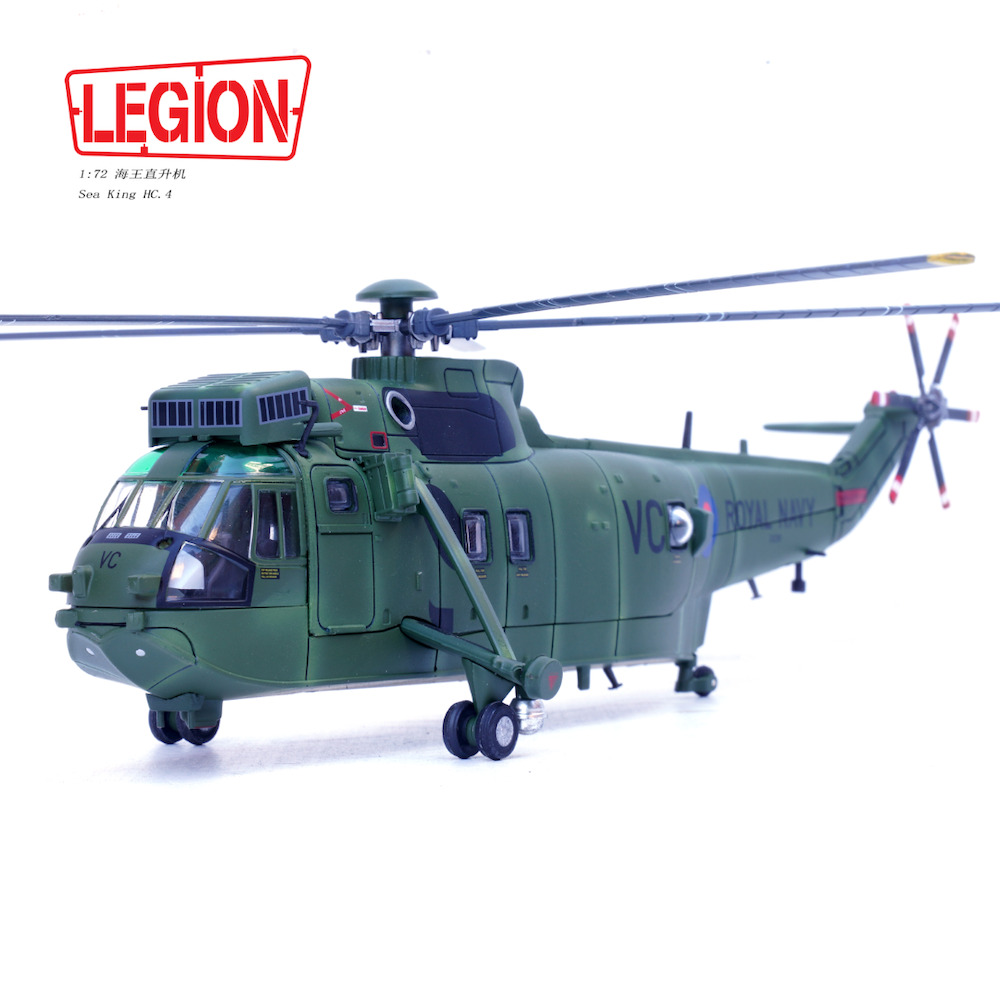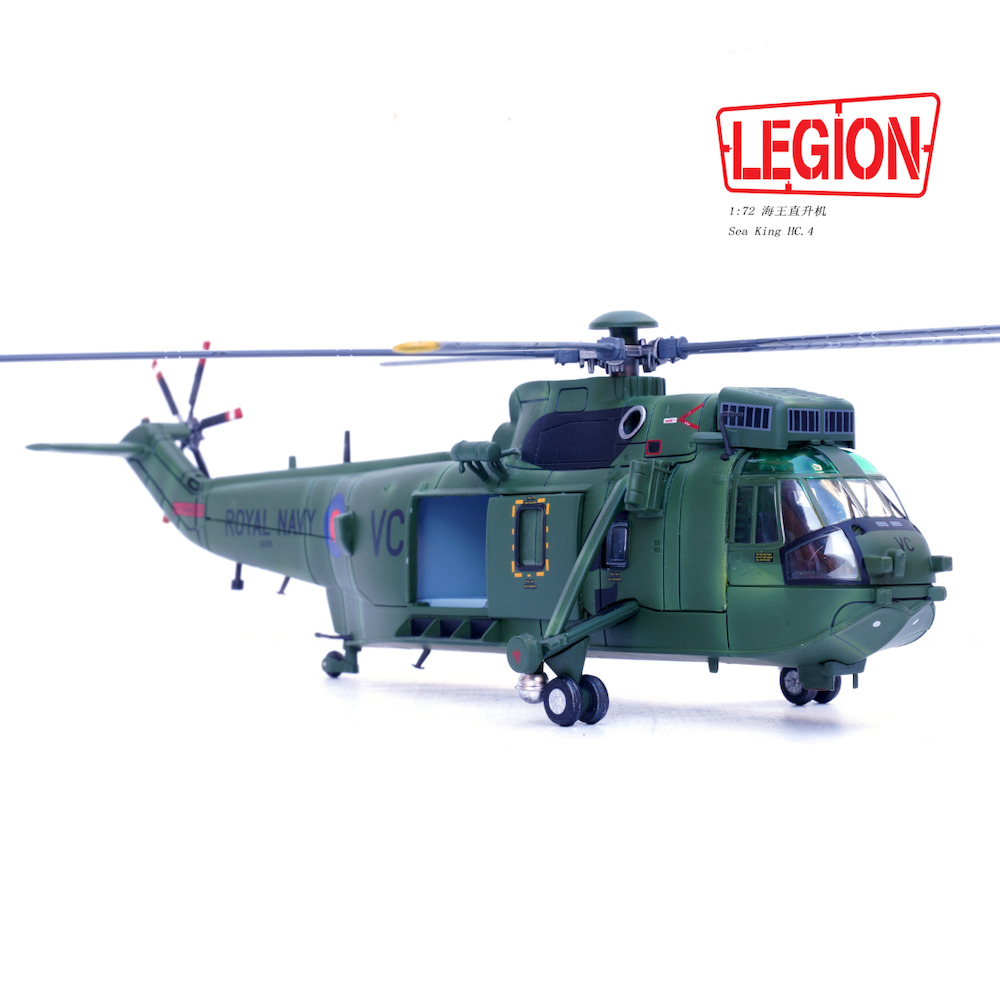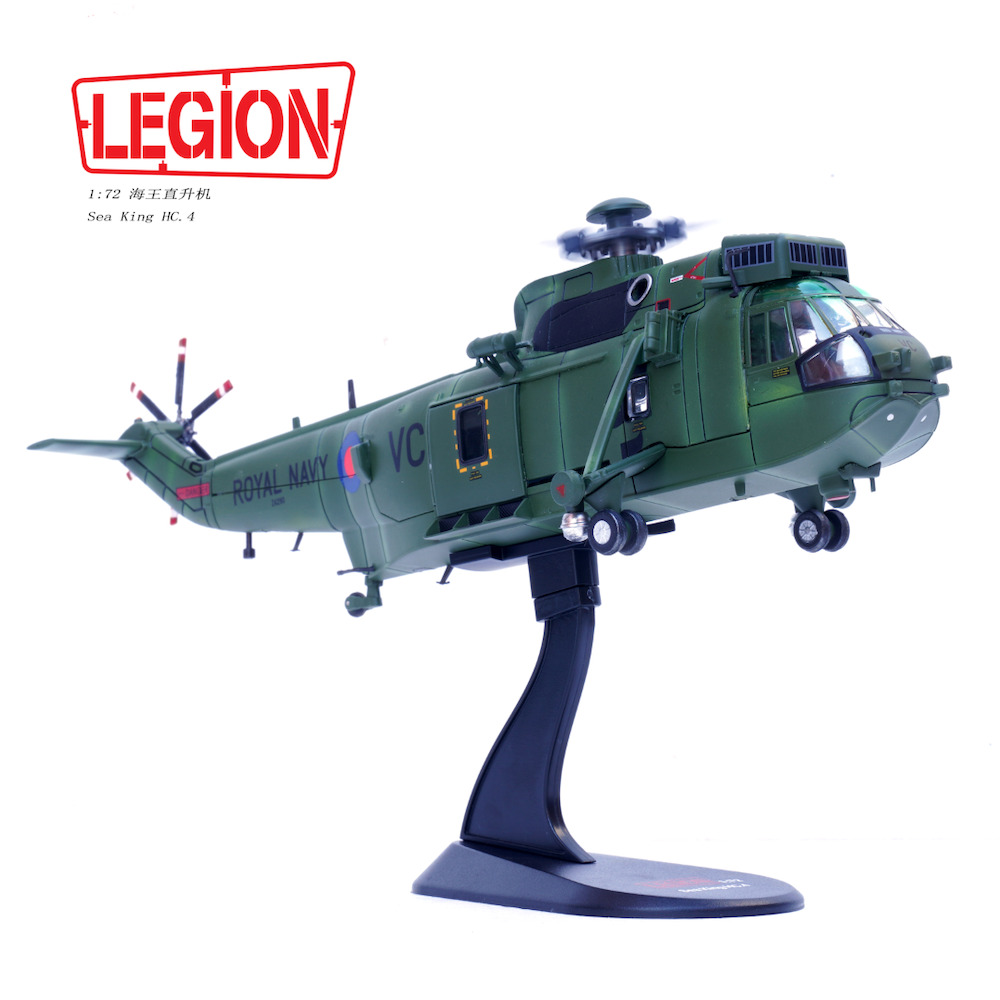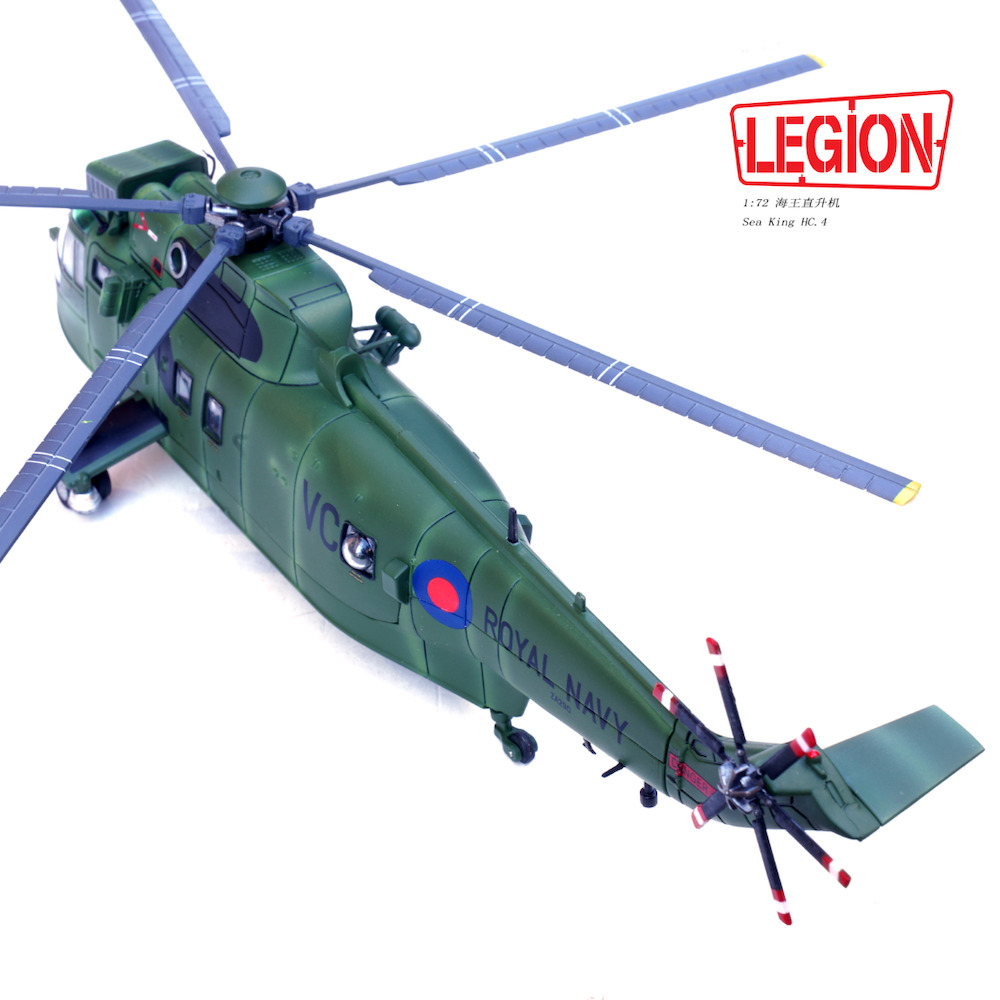Westland Sea King HC4 – 846 NAS Royal Navy, Falklands war, Operation Mikado, Chile 18 May 1982
Add to compare2 in stock
£59.95
2 in stock
Panzerkampf 1/72 scale 14008LE: Westland Sea King HC4 ZA290/ VC of 846 Naval Air Squadron Royal Navy. Falklands war; Operation Mikado, Chile 18 May 1982. With opening side door, 2 different rotor hubs so that blades can be displayed in the extended or folded position, plus display stand.
Length 12.25 inches Rotorspan 10.25 inches
Operation Mikado was the code name of a military plan by the United Kingdom to use Special Air Service troops to attack the home base of Argentina’s five Super Etendard strike fighters at Río Grande, Tierra del Fuego, during the 1982 Falklands War. Brigadier Peter de la Billière was in charge of planning the operation.
A preliminary reconnaissance mission on Río Grande, code-named Operation Plum Duff, was launched from HMS Invincible on the night of 17th/18th May, as a prelude to the attack. The operation consisted of transporting a small SAS team to the Argentine side of Tierra del Fuego on a stripped down Royal Navy Westland Sea King HC.4 ZA290. The original plan was for the SAS team to march to the Rio Grande air base from the drop-off point and to set up an observation post to collect intelligence on the base’s defences.
The mission required that the Sea King helicopter travel a distance close to its maximum operating range, making this a one-way mission. Therefore, the aircrew mission consisted of dropping the SAS team in Argentina, heading to Chile and disposing of the aircraft by sinking it in deep water.
The aircraft, with a three-man crew and an eight-man SAS team, took off from Invincible at 0015 hrs on 18th May. The aircraft inadvertently passed close to an Argentinian drilling rig in an offshore gas field forcing it to detour, adding twenty minutes to the transit. As it approached the Argentinian coast after four hours, fog reduced visibility to less than a mile. As they approached twelve miles from the planned SAS drop-off point, visibility was reduced to such an extent that the pilot was forced to land. The pilot and the commander of the SAS patrol disagreed on their exact position while the SAS commander was also certain that they had been spotted by an Argentine patrol: he asked to be dropped on the Chile/Argentine border.The pilots were forced to fly on instruments through Instrument Meteorological Conditions into neutral Chile. The SAS team was dropped off on the south coast of Bahia Inútil where they were to attempt to move to their observation post on foot. The helicopter crew flew to a beach closer to Punta Arenas where they landed. One of the two pilots and the aircrewman disembarked on the beach and cut holes in the helicopter to allow it to sink once it was ditched. The other pilot then flew it out over the water but was unable to sink it. He flew back to the beach to cut more holes, but was blinded in his night vision goggles by a blinking “Low Fuel” light and crashed on the beach. The crew set fire to the helicopter and detonated explosive charges before leaving the scene. They moved over the course of several nights to a point of observation near Punta Arenas, where they attempted to make contact with the British Embassy. They were discovered and picked up by the Chilean military while moving through town and were turned over to British officials. Operation Mikado was subsequently cancelled.
The Westland WS-61 Sea King is a British licence-built version of the American Sikorsky S-61 helicopter of the same name, built by Westland Helicopters. The aircraft differs considerably from the American version, with Rolls-Royce Gnome engines (derived from the US General Electric T58), British-made anti-submarine warfare systems and a fully computerised flight control system. The Sea King was primarily designed for performing anti-submarine warfare (ASW) missions. A Sea King variant known as the Commando was developed by Westland to serve as a troop transport.
In British service, the Westland Sea King provided a wide range of services in both the Royal Navy and the Royal Air Force. As well as wartime roles in the Falklands War, the Gulf War, the Bosnian War, the Iraq War and the Afghanistan War, the Sea King is perhaps most well known in its capacity as a Royal Navy Search and Rescue (red and grey livery) and RAF Search and Rescue Force (yellow livery) helicopter. The Sea King was also adapted to meet the Royal Navy’s requirement for a ship-based airborne early warning platform.
On 26 September 2018, the last remaining Sea King variant in Royal Navy service was retired. Most operators have replaced, or are planning to replace, the Sea King with more modern helicopters, such as the NHIndustries NH90 and the AgustaWestland AW101. Heli Operations continue to operate three Mk 5 Sea Kings, based at RNAS Portland, training German Navy pilots.
| Weight | 1.4 kg |
|---|












